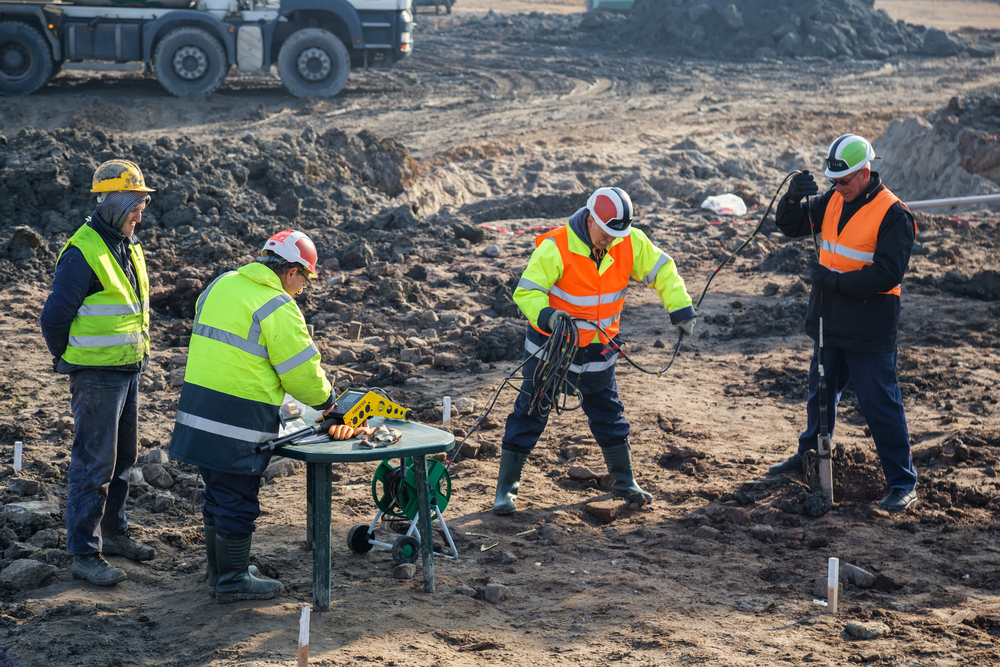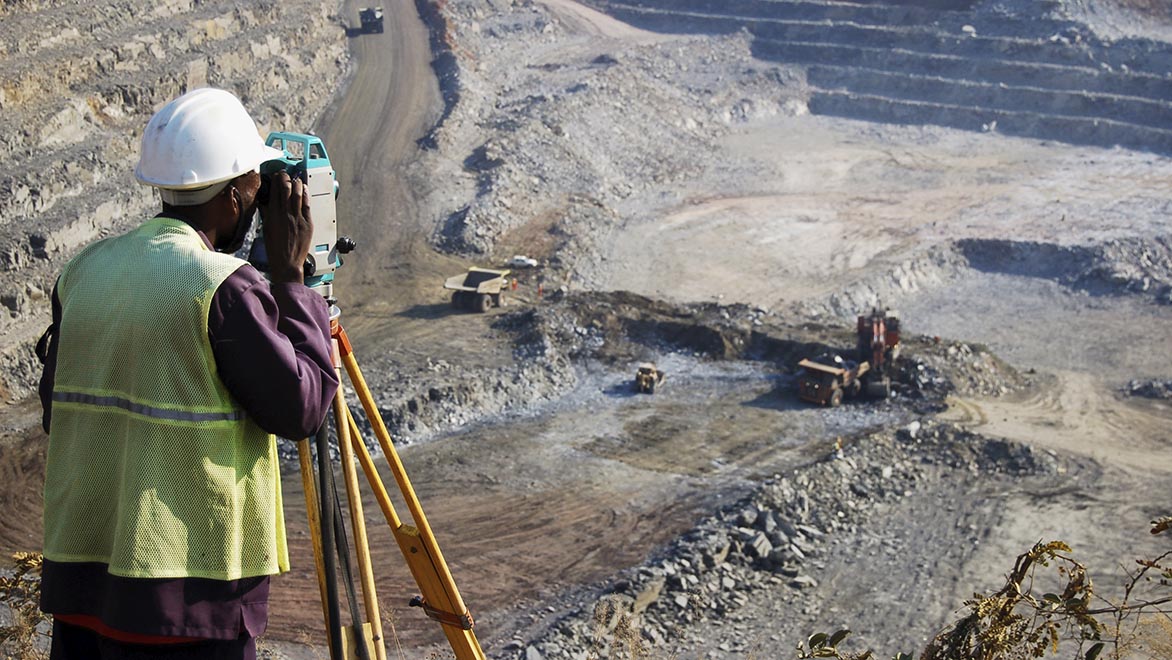How a Geotechnical Specialist Can Make Sure the Success of Your Building Structures
How a Geotechnical Specialist Can Make Sure the Success of Your Building Structures
Blog Article
Discovering the Basic Concepts and Applications of Geotechnical Design for Lasting Facilities Advancement
The junction of geotechnical design and sustainable infrastructure development provides an engaging chance to boost both style efficacy and ecological obligation. By recognizing vital principles such as soil technicians, website characterization, and foundation layout approaches, designers can create remedies that are not just efficient yet likewise decrease environmental footprints.
Key Concepts of Geotechnical Engineering
Comprehending the key principles of geotechnical design is crucial for creating sustainable infrastructure (geotechnical engineer description). This discipline focuses on the interaction in between soil, rock, and structures, playing an important duty in the security and efficiency of engineering tasks. The leading concept is the evaluation of subsurface conditions with website examinations, which provide important info concerning dirt homes, stratification, and groundwater degrees
An additional important concept is the application of efficient stress and anxiety concept, which aids engineers understand how soil behavior changes under varying tons. This understanding is vital for reviewing the bearing ability of structures and ensuring that frameworks can withstand both vibrant and fixed pressures.
In addition, the principles of soil-structure interaction and slope stability are essential to geotechnical layout, as they educate choices on the placement and style of keeping wall surfaces, embankments, and inclines.
Finally, geotechnical engineers should consider sustainability by advertising making use of locally sourced products, lessening environmental impact, and maximizing layouts for durability. By adhering to these concepts, geotechnical design adds dramatically to the development of lasting and durable infrastructure that fulfills the requirements of society while securing the atmosphere.
Dirt Mechanics and Its Significance
Dirt technicians works as the structure of geotechnical engineering, giving the scientific principles required to evaluate the actions of soil under numerous conditions. Recognizing soil technicians is essential for predicting just how soil will certainly respond to tons, changes in dampness content, and various other environmental factors. This expertise permits designers to develop frameworks that can endure the stress exerted by the dirt and ensure stability and safety and security.
The study of dirt technicians includes numerous aspects, including dirt classification, shear permeability, compressibility, and stamina. These elements affect the design of foundations, maintaining wall surfaces, and various other geotechnical structures, making it necessary to assess soil properties properly. The shear strength of soil directly impacts the stability of excavations and slopes, while compressibility impacts negotiation forecasts for structures.
Moreover, soil mechanics plays a crucial duty in lasting framework growth. By recognizing the dirt's actions, engineers can lessen ecological effects, enhance material use, and improve the long life of structures. This combination of soil mechanics into geotechnical design techniques not just makes certain safety and security yet likewise adds to the total sustainability of construction projects, advertising reliable source administration and environmental stewardship.
Site Characterization Techniques
Efficient website characterization methods are vital for collecting necessary information regarding subsurface problems before building - all about geotechnical engineering. These techniques give useful insights right into dirt buildings, rock formations, groundwater degrees, and potential geohazards, therefore informing task design and mitigating dangers
One widely utilized approach is drilling, which enables direct tasting of soil and rock layers. This can be enhanced by in-situ testing, such as Common Infiltration Tests (SPT) and Cone Infiltration Examinations (CPT), to assess dirt strength and stratification. Geophysical methods, consisting of seismic refraction and electric resistivity surveys, allow non-invasive assessment of subsurface materials and frameworks, offering a wider viewpoint on geological conditions.
Furthermore, research laboratory testing plays an important function in analyzing soil samples acquired from exploration. Examinations such as grain size analysis, Atterberg limitations, and triaxial shear examinations produce essential data on dirt more info here behavior under different loading conditions.
Integrating these site characterization methods not just improves the understanding of website conditions however likewise supports sustainable infrastructure development by guaranteeing that jobs are designed with ideal safety and security margins and efficiency specs. Therefore, an extensive site characterization is vital for educated decision-making in geotechnical design.
Foundation Design Techniques
Foundation design techniques are vital for making sure the security and durability of structures in various geotechnical contexts. These techniques begin with a detailed website examination, which consists of dirt testing and analysis to determine the physical residential properties of the subsoil. Recognizing soil behavior under load is crucial for selecting the ideal foundation kind, whether deep or shallow.
Shallow structures, such as spread grounds or mat structures, are commonly utilized when appropriate soil layers are readily available near the surface area. These foundations disperse tons over a larger location, minimizing the risk of excessive negotiation. Alternatively, deep foundations, such as heaps or pierced shafts, are utilized in scenarios where surface area soils are poor to support structural lots. They transfer tons to deeper, extra steady soil or rock layers.

Lasting Practices in Geotechnical Engineering
The integration of lasting methods in geotechnical engineering plays a pivotal duty in boosting the financial and ecological practicality of facilities jobs. By prioritizing source effectiveness and reducing environmental influences, engineers can add to the growth of durable infrastructure systems.
One trick sustainable practice includes the usage of alternate products, such as commercial spin-offs and recycled aggregates, which can lower the demand for virgin resources and reduced carbon discharges. In addition, soil stablizing methods, consisting of the application of bioengineering techniques, boost soil properties while promoting eco-friendly balance.
In addition, the execution of advanced geotechnical modeling and tracking technologies enables better prediction and monitoring of ground conditions, causing maximized design options and resource use. These technologies likewise promote the assessment of long-lasting efficiency, guaranteeing that frameworks continue to be useful and safe over their life expectancy.

Final Thought
In conclusion, the concepts and applications of geotechnical design play a vital function in lasting infrastructure advancement. Highlighting dirt mechanics, site characterization, and ingenious structure design approaches improves the resilience and effectiveness of structures.
By understanding essential principles such as dirt technicians, site characterization, and structure style methods, engineers can produce remedies that are not just effective but likewise minimize eco-friendly impacts.Soil mechanics serves as the foundation of geotechnical engineering, giving the scientific principles required to evaluate the habits of soil under various problems. Understanding dirt technicians is vital for forecasting just how dirt will respond to loads, changes in wetness content, and other environmental elements.The study of soil mechanics encompasses different aspects, consisting of soil category, shear permeability, strength, and compressibility. These factors influence the design of foundations, retaining walls, and various other geotechnical frameworks, making it necessary to analyze dirt homes accurately.
Report this page